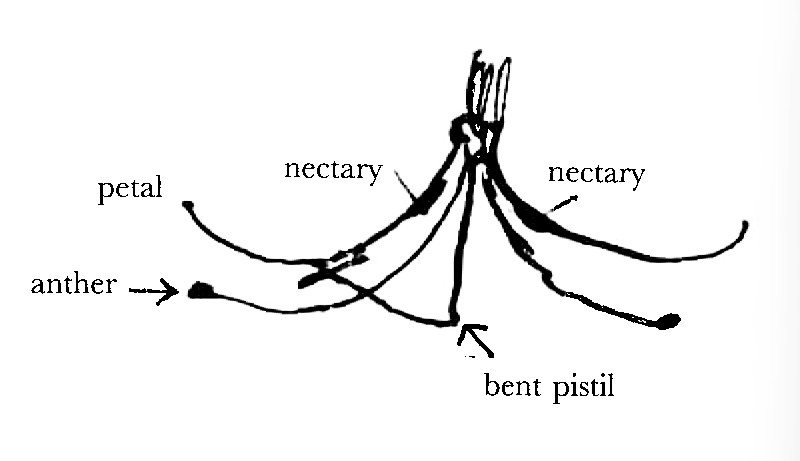To J. D. Hooker 12 July [1860]
Miss Wedgwood’s | Hartfield | Tonbridge Wells
July 12th
My dear Hooker
Many thanks for newspaper. I have had a little, but very interesting, note from Falconer;1 he tells me how capitally things went on at Oxford.
Poor Etty, I find, very little better; but what shade of difference there is, is certainly on the right side. It is most disheartening to us.—
I did so thoroughily & greatly enjoy my little visit to you.—2 I want two questions answered; I know how busy you are. Do you think Mr Oliver would think me unreasonable, if I asked him to answer them?3 If he would, pray tell him, I shd. be very much obliged.
Firstly name of enclosed Saxifrage it is often kept in pot in Houses4 on account of slightly curved pistil towards nectar-secreting surface.—& impregnation by Diptera
Secondly the name of that wonderful hot-house flower, with rectangularly-bent pistil, which has been falsely said to turn round. This flower5 has stuck in my throat ever since: I was a fool not to have accepted your offer of taking it home to examine.—6 I want to know whether a sort of fold at base of each petal secretes nectar: a closely similar fold at base of 2 upper petals in an orange-coloured Alstrœmeria does secrete nectar. I care for this case because it is strongest apparent exception to my rule of bent pistil & gangway into nectary.
 Is not this position of parts? Instead of the pistil revolving, would not large insect successively visiting the supposed nectaries, brush over anthers & stigma; so that the pistil is bent into the circular gangway to the nectaries?
Is not this position of parts? Instead of the pistil revolving, would not large insect successively visiting the supposed nectaries, brush over anthers & stigma; so that the pistil is bent into the circular gangway to the nectaries?
(N.B I find common Martagon Lily with curved pistil so like in all respects that I can make out above points.)7
I have been examining Orchis pyramidalis, & it almost equals, perhaps even beats, your Listera case:8 the sticky glands are congenitally united into saddle-shaped organ, which has great power of movement & seizes hold of bristle (or proboscis) in admirable manner, & then another movement takes place in pollen-masses, by which they are beautifully adapted to leave pollen on the two lateral stigmatic surface.— I never saw anything so beautiful.—
Ask your scientific gardener to have another try at fertilising Leschenaultia & mark the flowers;9 for the ovaria of two flowers of which I stirred up the pollen in indusium before going to Sudbrook have swollen to twice diameter of any other ovaria: hence I feel pretty sure that I am on the right road.—
I have been thinking a bit about your Book & the more I think of it the more awfully difficult it seems, & therefore the more worthy of your attempting.10 One of the first points seems naturally to occur viz difference between plant & animal! And then, as I suppose you will allude to unicellular plants, what makes an individual!! And thirdly the difference between propagation by gemmation & sexual generation! Nice simple little subjects to discuss!—
Yours ever affectionately | C. Darwin
Do not you answer; if you do not like to ask Mr. Oliver, let this note sleep, for everything will keep.
Footnotes
Summary
Floral anatomy; pistil curvature and pistil movement. CD’s rule that bent pistils occur in "gangway" into nectaries.
The book JDH is planning, which he and CD discussed at Kew, should deal with plant reproduction.
Letter details
- Letter no.
- DCP-LETT-2864
- From
- Charles Robert Darwin
- To
- Joseph Dalton Hooker
- Sent from
- Wedgwood, S. E. (b) Hartfield
- Source of text
- DAR 115: 67
- Physical description
- ALS 8pp
Please cite as
Darwin Correspondence Project, “Letter no. 2864,” accessed on
Also published in The Correspondence of Charles Darwin, vol. 8


